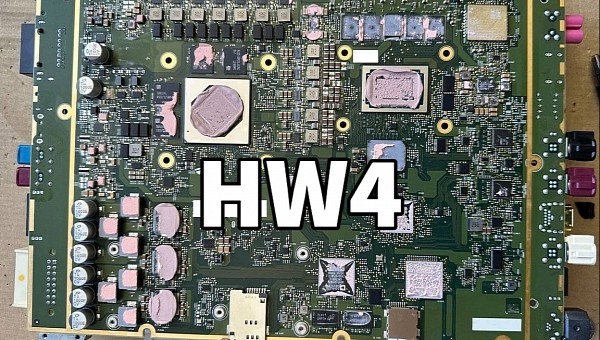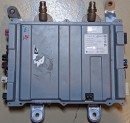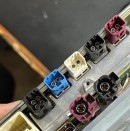Tesla Hardware 4 Autopilot Computer is shipping now with the Model S and Model X. Tesla community was treated to a teardown in February that seemed to unveil all of its secrets. Reverse engineering the software reveals more interesting facts about the new hardware than we previously thought.
When white-hat hacker Green (@greentheonly) revealed the first pictures from the Hardware 4 teardown, everyone thought this cleared all the controversies and unknowns. More than a month later, the HW4 computer and the accompanying sensors have entered the mainstream as more Model S/X are delivered to customers. This was a good opportunity to dig deeper into its internals, and Green seized the moment.
By analyzing firmware samples, he discovered that the currently-shipping version, internally called 2-SOC, has two possible camera configurations. One of them is shipped with the Model S and Model X and doesn't feature any new cameras to expand Autopilot capabilities. The second configuration will have additional cameras, as rumored before and hinted in the HW4 computer teardown.
The additional cameras would be installed in the front bumper, as seen on the Cybertruck during Investor Day, and on the sides. The most likely location, also used by other carmakers, is inside the side mirrors. Currently, it's impossible to know whether the additional cameras will be offered on current models or only on future ones, like the Cybertruck. All cameras, except the cabin camera, would output video at a 2880x1876 resolution and 45 frames per second. Based on the firmware samples Green obtained, there are differences between the main and backup cameras and the rest of the side cameras.
As rumored before, the GPS module supports multi-band and uses an ST Micro chip from the Teseo V family. Based on the product page, it supports all GNSS constellations in L1, L2, L5, and E6 frequency bands. The high-definition radar sensor that Tesla introduced with the HW4 sensor suite is connected via ethernet, having an IP address of 192.168.90.110.
However, more interesting than the existing configurations is what the firmware reveals about the future. According to Green's findings, the HW4 will also come in a 3-SOC design. This one would not feature new cameras, but Green thinks it could be used in cars without a GPU so that they can plug in one more SoC on the Autopilot board. It could also point to future upgrades made possible with the 3-SOC version, allowing Tesla to add new hardware features to existing cars.
As Elon Musk said in January, this is not possible for the HW3-equipped vehicles, or at least not worth trying. The costs and difficulty of retrofitting existing cars with HW4 computers and sensors would be too high, so it would not be economically feasible to do it. Musk also said that the benefits of having HW4 over HW3 are too insignificant to count, although we are not convinced. The radar sensor alone should add improved safety.
By analyzing firmware samples, he discovered that the currently-shipping version, internally called 2-SOC, has two possible camera configurations. One of them is shipped with the Model S and Model X and doesn't feature any new cameras to expand Autopilot capabilities. The second configuration will have additional cameras, as rumored before and hinted in the HW4 computer teardown.
The additional cameras would be installed in the front bumper, as seen on the Cybertruck during Investor Day, and on the sides. The most likely location, also used by other carmakers, is inside the side mirrors. Currently, it's impossible to know whether the additional cameras will be offered on current models or only on future ones, like the Cybertruck. All cameras, except the cabin camera, would output video at a 2880x1876 resolution and 45 frames per second. Based on the firmware samples Green obtained, there are differences between the main and backup cameras and the rest of the side cameras.
As rumored before, the GPS module supports multi-band and uses an ST Micro chip from the Teseo V family. Based on the product page, it supports all GNSS constellations in L1, L2, L5, and E6 frequency bands. The high-definition radar sensor that Tesla introduced with the HW4 sensor suite is connected via ethernet, having an IP address of 192.168.90.110.
However, more interesting than the existing configurations is what the firmware reveals about the future. According to Green's findings, the HW4 will also come in a 3-SOC design. This one would not feature new cameras, but Green thinks it could be used in cars without a GPU so that they can plug in one more SoC on the Autopilot board. It could also point to future upgrades made possible with the 3-SOC version, allowing Tesla to add new hardware features to existing cars.
As Elon Musk said in January, this is not possible for the HW3-equipped vehicles, or at least not worth trying. The costs and difficulty of retrofitting existing cars with HW4 computers and sensors would be too high, so it would not be economically feasible to do it. Musk also said that the benefits of having HW4 over HW3 are too insignificant to count, although we are not convinced. The radar sensor alone should add improved safety.
Now that HW4 is widely available I got some firmware samples and discovered that:
— green (@greentheonly) March 26, 2023
The shipping version is internally called 2-SOC and has two possible camera layouts. The current one or the expanded one with added surround view cams (front bumper and two more)






